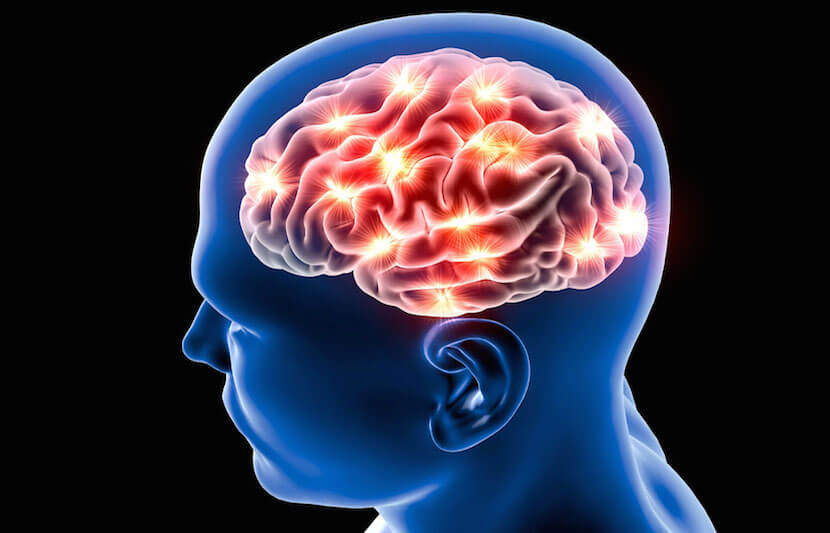Researchers at Stanford University have identified a particular pattern of an electrical activity in the key brain region that predicts impulsive actions before they occur. They also found that a short electrical pulse delivered to that particular brain region at the right time can prevent these actions.
The researchers believe that this biomarker can be used in clinics to treat patients with impulse control disorders (ICDs).
The study is published in the Proceedings of the National Academies of Sciences.
What is an Impulse Control Disorder?
“Impulses are normal and absolutely necessary for survival,” Dr. Casey Halpern, assistant professor of neurosurgery and the study’s lead researcher, said in a statement. “They convert our feelings about what’s rewarding into concrete action to obtain food, sex, sleep and defenses against rivals or predators.”
However, people with ICDs cannot control their impulsive behavior and end up making poor judgments that often lead them to destructive ends. Scientists categorize conditions like eating disorders and addictions under ICD.
Lack of Awareness and Treatment
While the number of people who are diagnosed with ICD increases every year, this condition is not getting fully recognized and treated. For example, intermittent explosive disorder (IED), a condition characterized by the inability to control anger that could lead an individual to lash out physically, is the most common form of ICD, but only 28.8 percent of people formally diagnosed with IED have ever received treatment.
There is a “lack of treatment for patients suffering from dangerous and/or pathological impulses like overeating in obesity (despite gastric bypass surgery), drug seeking, binge drinking in alcoholism, pathological gambling to name a few,” said Halpern. “These are exceedingly common problems in our society.”
It is this lack of treatment that motivated Halpern to conduct the study.
Case Study: Mice and Binge Eating
Since the brain components for reward systems in vertebrates, like mice and humans, are largely similar, Halpern’s team first tested with mice.
Unlike the standard pellets for food, special high-fat pellets were given to mice for one hour every day for 10 days. In that one hour, they were allowed to eat as much as they wanted.
Then, researchers implanted electrode arrays in the mice’s brains and monitored electrical activity in their nucleus accumbens, the brain’s reward circuitry. In most vertebrates, this part of the brain directs survival-promoting actions by inducing pleasure in anticipating or performing such actions. So, a normal vertebrate is naturally impulsed to find pleasure in food, which is essential to survival.
In observing mice, the researchers found that a signature pattern of heightened electrical activity showed up right before binge eating, peaking one second before a mouse took a bite on the high-fat pellet. In contrast, when a mouse was about to bite on the standard pellet, the researchers did not find the same uptick.
In cases when the signature pattern of electrical activity showed up, the researchers delivered a small 10-second electrical pulse to the mice’s nucleus accumbens. This delivery did not affect the mice’s intake of normal food, social behavior or other physical activities, but stopped them from overindulging in the high-fat pellets.
Case Study: Humans and Cash Rewards
The study also involved a participant suffering from obsessive-compulsive disorder (OCD), who was asked to perform computerized tasks that generated cash rewards when completed successfully.
Just like mice, once the participant became nearly certain that he was going to receive a reward upon completing the task, the researchers identified the signature pattern of heightened electrical activity in his nucleus accumbens.
“The fact that we saw a similar signal prior to two different behaviors, both intended to obtain rewards — food in the case of mice, money in the case of the human subject — to which the individuals had become hypersensitized by their repeated exposure suggests that this signal may be common to many impulsive behaviors, making them amenable to treatment along similar lines,” Halpern said in a statement.
What’s next?
The team hopes to further study on humans to confirm that a similar delivery of electrical pulses will prevent humans from acting impulsively as it did for mice, and is currently seeking funding for testing on humans, Halpern said.
“Imagine if you could predict and prevent a suicide attempt, a heroin injection, a burst of binge eating or alcohol intake, or a sudden bout of uncontrolled rage,” Halpern said in a statement.
In the near future, Halpern said the team hopes to start testing on humans with severely refractory obesity.



